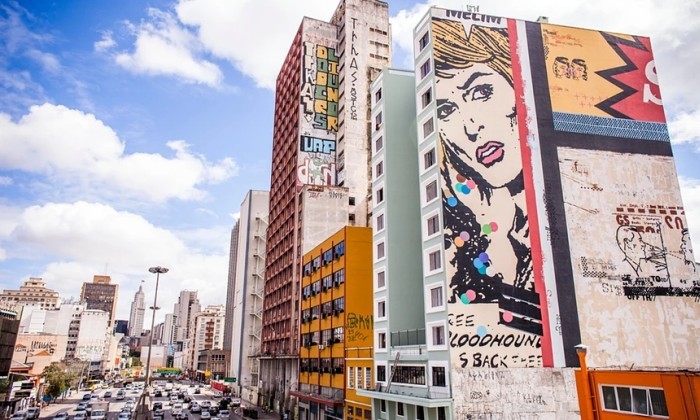Global Urban Billboard Dismantling Movement

In just a year, Brazilian São Paulo authorities removed 15,000 outdoor billboards and posters from the streets . Many vacant seats were replaced with street art, as in the photograph.
São Paulo was the first city in the world to carry out a complete cleaning of outdoor advertising. Street advertising campaigns were held in Chennai, Grenoble, Tehran, Paris, other cities, and now New York. It seems that the movement is becoming global . Maybe the era of cities is ad-free?
It is completely unusual for a resident of any metropolis to see such a picture. Therefore, the guests of Sao Paulo immediately feel: something is wrong. Over time, they understand the reason for the strange sensation.
If outdoor advertising is not controlled, it quickly swallows up the city. This is exactly what happened to São Paulo in the early 2000s. The authorities faced the problem of controlling the advertising market: creators found ever new places to place banners. After a decade of struggle, the authorities took an extraordinary step to ban outdoor advertising. At all.
In 2007, Mayor Gilberto Kassab signed a Clean City Law decree calling outdoor advertising a form of “visual pollution.” During the year, 15,000 billboards and 300,000 store signs were dismantled if they were too large.

An important role for the start of the campaign is played by activists, artists, designers. Activists are campaigning among residents, and designers can show people in advance what the streets will look like in the new style. For example, the French digital artist Etienne Lavie on his website shows the views of the city, if you replace the advertisement with classic paintings.

For New York, there is even a free No Ad mobile app that virtually replaces metro ads with street art. Someday we will wear glasses of augmented reality - and the effect will spread not only to the metro, but also to the entire surrounding space.

Civic activism is very important, but most often the initiative to ban street advertising belongs to the municipalities. In 2009, the installation of billboards was banned by Indian Chennai. Several US states, including Vermont, Maine, Hawaii, and Alaska, are also completely spared from outdoor advertising. In 2011, Paris set a goal to reduce its number by a third. And in Tehran, all 1,500 billboards were replaced with works of art within ten days.
Street advertising as "visual pollution" is harmful to people. It is so deeply embedded in the architecture of the city that sometimes it is literally impossible to avoid. In any other media, a person passes ads by the eye, does not look at it. But in the city it is impossible to close your eyes.
In resident of Manhattanbillboard hanging in front of the window. She sees ads more often than the sky.

The same is true for residents of many other cities. Perhaps they will be happy to meet the initiative to dismantle street advertising.
The first European city to launch such a program was French Grenoble last year. The mayor said 326 city billboards will be replaced with information boards and trees. Residents are thrilled with this initiative. Unfortunately, the city has already signed a contract with JCDecaux for advertising on public transport stops until 2019.
Many other municipalities have the same contracts (stops, posters). They bring some money to maintain urban infrastructure, but usually this is not a very critical investment for the city. The lion's share of street advertising is third-party advertising, which is prohibited by a willful decision.
Of course, advertisers will surely find a way to infiltrate the urban landscape in another way. Not so intrusive, more hidden. For example, through tracking devices in trash .
